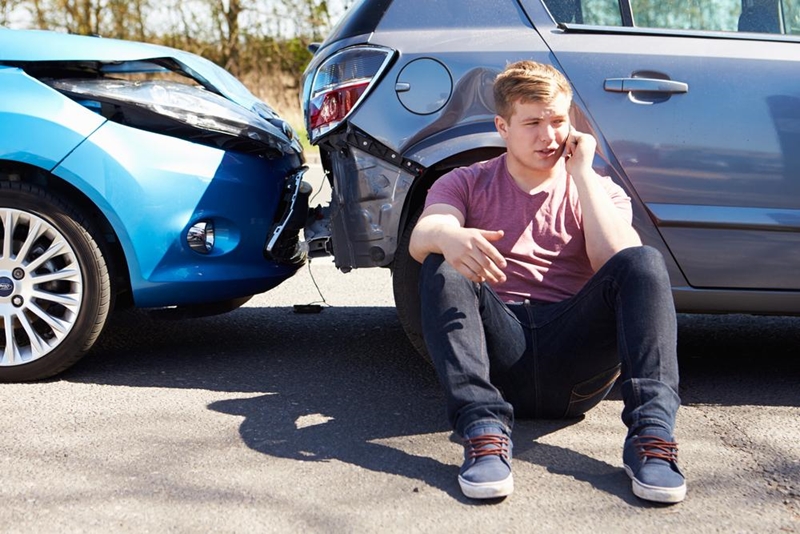
The vehicle identification number (VIN) is composed of 17 characters (digits and capital letters) that act as a unique identifier for the vehicle. A VIN displays the car's unique features, specifications and manufacturer.
The VIN can be found in a couple of places including on the car's registration label (1), on the compliance plate in the engine bay (2) or on the passenger side windshield (3), or on one of the door posts (where the door latches when it is closed) (4). See the image below:
Have you ever dreamed about being behind the wheel of a car, but not having to do anything to get to your destination safely? Two decades ago, it seemed like a pipe dream. Now, the technology has arrived and it's the way of the future. It won't be ubiquitous for some time, though. If you're buying a used car, you should still check it out with a CarHistory report (but it likely won't be autonomous).
Just because the technology is new doesn't mean it's dangerous or untested.
Some might not be quick to trust a machine to take care of something we've done our whole lives - drive on the roads. Just because the technology is new doesn't mean it's dangerous or untested. Self-driving cars are undergoing stringent testing around the clock to make sure the systems are safe and that people are going to be comfortable in the driver/passenger seat.
What do you need to know about the cars of the future?
Safety systems for all situations
As yet, there are no overarching regulations governing the sort of safety technology that needs to be included in a self-driving car, but that doesn't mean they aren't safe1. There are sensors in all self-driving cars that monitor the road around the vehicle, keeping an eye on cars, bikes, pedestrians, animals and upcoming traffic lights or obstructions2.
"We are making tremendous progress in instrumenting vehicles to know everything that's happening around them," commented Anuj Pradhan from the University of Michigan's Transportation Research Institute3.
Many people believe that they are far better at determining what is a risk and what is not when on the roads, but the truth is that sometimes, people get distracted. It doesn't have to be you who gets distracted for an accident to occur, either. For example, that driver just in front of you on the motorway who's trying to change lanes might forget to check their blind spot before swinging across. No matter how hard you're concentrating on driving safely, you might not be able to avoid a collision.

The beauty of self-driving cars is they don't stop concentrating. An autonomous vehicle will always be scanning its surroundings.
Have self-driving cars caused accidents on the roads yet?
Google has been testing self-driving cars all around America since 2009, and has covered close to 3 million kilometres4. In that time, it has been involved in 13 collisions, but not once has it been the fault of the autonomous vehicle, according to Google spokesperson Jacquelyn Miller:
"We just got rear-ended again yesterday while stopped at a stoplight in Mountain View. That's two incidents just in the last week where a driver rear-ended us while we were completely stopped at a light! So that brings the tally to 13 minor fender-benders in more than 1.8 million miles of autonomous and manual driving - and still, not once was the self-driving car the cause of the accident.4"
So, it seems that Google's self-driving cars aren't to blame for collisions on the roads. What's more, Ms Miller stated that in the 13 accidents, if the culprit car was autonomous, the collision would have been avoided2.
Fender-benders and major collisions on our roads could become a thing of the past.
Picture this: you're stopped at a traffic light and waiting for the light to turn green. You expect the car behind you to stop before hitting you, because that's regular driving practice. However, if the other driver is checking their phone or is otherwise distracted, will they stop in time? If they're driving an autonomous car, that won't even be a question - the sensors will know when to stop the car. When the light turns green, it will pull away at a safe following distance behind your car.
Fender-benders and major collisions on our roads could become a thing of the past when self-driving cars become ubiquitous. Until such a time, you'll need to keep driving your regular car. If you're thinking about buying another used vehicle, make sure you know its history with a CarHistory report. Get in touch today for more information.
1. Recode. The key question for self-driving car regulators: How safe is safe enough? Accessed March 2017.
2. Big Think. Google's Self-Driving Cars Are Ridiculously Safe. Accessed March 2017.
3. Wired. Self-driving cars won't just watch the world - they'll watch you. Accessed March 2017.
4. Ars Technica. Google self-driving car gets rear-ended in 13th accident since 2009. Accessed March 2017.